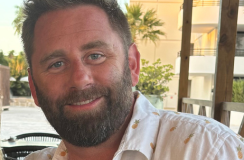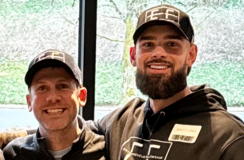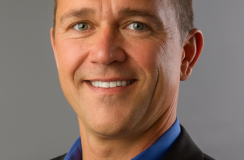magine making eight figures from a business you almost gave up on.
Shortly after acquiring a mental health practice where the numbers turned out to be misrepresented, Neil Saxon had what he calls “a Craigslist moment.” He and his wife, a psychologist, were overwhelmed by the ugly financial state of the business and ready to let it go by listing it for sale on Craigslist.
But they’d thrown all their savings into the deal, so they decided to stick it out.
There were plenty of dicey days to come, but that moment when they decided it had to work was a turning point. By the time they sold the business after seven years, the practice was wildly successful.
How did Neil transform a small struggling medical practice he bought for $120k into a multimillion-dollar business?
Luckily, his wife had a clinical background and was able to jump in and see patients, which she continues to do today (post-exit). Her willingness to grind saved the practice at a time when it wasn’t clear whether it would survive.
“It's nice to have the superpower of being able to do one of the tasks... You gotta be able to do something more than just accounting and strategy. Something that's revenue generating. It really saved us.”
They got to know their new business and determined the value of their existing group insurance contracts. Insurance companies gave them the heads-up about which neighborhoods already had a high demand for mental health services. While they did some marketing, the practice leaned heavily on these relationships.
The Saxons also turned things around by having the courage to make unpopular decisions like cutting employee pay. They chose the company’s health over individual staff members’ expectations (poorly set by the previous owner). Big-picture thinking eventually led to massive growth and a loyal team.
Even though Neil says they sold too early (given the company’s continued growth), he was ready to take some risk off the table and has since enjoyed the fruits of their perseverance. His story is an inspiring one for anyone who’s interested in acquisition but doesn’t have tons of capital.
Check out:
✳️ About Neil Saxon
✳️ Top takeaways from the episode
✳️ Episode highlights with timestamps

Acquisition Entrepreneur: Neil Saxon
💵 What he acquired: Fresh out of the Navy, Neil and his wife both took traditional jobs. However, Neil toyed with the idea of owning a franchise of some kind. It wasn’t until 2011, when he discovered online business listings, that they decided to buy a mental health practice. His wife was looking to leave her job, and this new venture fit nicely with her training as a psychologist. While Neil stayed mostly in the background, his wife was a visible clinician and still works in the practice, even after having sold it in 2020.
💡 Key quote: “I would rather acquire. You can acquire sort of on second base. Even if you acquired a mediocre business, you're got the base. It doesn't have to be a home run; the home run's probably not going to be for sale. But you can get a decent business, staffed with employees, that has a location, a name, and a proven market, and then you can tweak it.”
👋 Where to find him: LinkedIn | Twitter
Acquisition Tips From the Episode
Top takeaways from this conversation
💸 Positive cash flow = rapid expansion.
If you buy a brick-and-mortar business that you want to scale, Neil has two golden pieces of advice.
- Find a strong broker who can negotiate your rent.
- Look into equipment leasing to furnish office spaces.
These tactics allowed Neil to achieve positive cash flow for each new office of the practice quickly, even with the interest he was paying to finance computers and furniture. This was key to the accelerating growth that kicked off after year six.

😬 Being the bad guy — temporarily — might save your business.
Six months after acquiring the practice, Neil and his wife made the tough decision to cut their clinicians’ pay. They felt some guilt, having previously promised the staff that nothing would change and things would only get better.
He says a new business owner has to be confident enough to “rip off the band-aid” when it’s necessary, despite the temporary pain it might cause. Making the call no one wants to make could be the move that keeps the business afloat — which is better for everyone in the long run.
👔 Sometimes you need to work in the business.
Traditional entrepreneurial advice says you should work on the business — but when money is tight, it helps immensely to have the skills to work in it too.
One huge advantage Neil had when acquiring a mental health practice was his wife’s professional background in psychology. Her clinical knowledge and training meant she could work in the business seeing patients, which was helpful when they were just squeaking by. Sometimes, she would put in 10-hour days, and Neil says it’s what saved the practice.
“You have to be able to do something more than accounting and strategy — something that’s revenue-generating.”
🚀 Don’t sit on the fence, just commit.
Every great story has a moment when the protagonist almost gives up.
When Neil and his wife had their “Craigslist moment” and seriously considered selling the business, they were at that point.
And like true heroes, they pushed through their doubts. What changed everything was the decision to just go and not look back. Neil remembers their mutual commitment as the start of a “healing process.” Things weren’t perfectly smooth after that, but they had the strength to keep going and that made all the difference.
Episode Highlights
Inflection points from the show
[2:41] Life as a closeted entrepreneur: After Neil and his wife left the Navy, they worked traditional jobs — he in medical sales and she in psychology. But Neil says he’d always felt like he had the entrepreneurial bug.
[3:54] To franchise or not: Before he took a corporate job, Neil considered buying a franchise. He looked into the restaurant business and eventually came upon acquisition as an option via the listing site BizBuySell.
[4:55] The simplicity of buying a listed business: Neil knew he wanted to buy a business that was already listed for sale, rather than putting out feelers to business owners. He searched for businesses in the $150k range and found a mental health practice that fit the bill. It was a quick transaction: the broker was responsive and he went from inquiry to closing in about one month.
[6:19] Buying a job for his wife: Neil and his wife bought the business for $100k, with the understanding that it was making $120k per year. It would replace her salary at the very least, they thought. To win over the seller, Neil offered $120k — on the condition that the seller would finance $70k. He put $50k down and the seller agreed to finance the rest over three years.
[9:07] When things aren’t as they appear: At first, Neil says they put on “the new business owner parade,” telling the staff nothing was going to change. Then, they were unexpectedly hit with the reality of the practice’s dire financial state and were pouring their own money into the business account to make payroll every two weeks.
[11:34] Unpredictable obstacles: There were some facets of the clinician-business split that weren’t revealed during due diligence, namely, the margins of some clinicians’ pay. The business wasn’t benefitting from the highest-producing clinicians because they were taking home the highest percentages.
[13:43] Getting lawyers involved: Neil considered going after the seller for financial misrepresentation, but he didn’t want to let go of the business because his net worth was tied up in it. He ultimately decided against suing.
[15:10] Capitalizing on existing demand: Neil and his wife made a plan to dig the practice out of its hole. They realized their most valuable assets were group contracts with insurance companies. Without added marketing, they could turn the “demand dial” by partnering with these companies to provide services in areas with the greatest need.
[18:39] Making hard decisions: Six months in, they decided big changes were in order. Because of the high percentage of revenue that went to some clinicians’ pay, no amount of growth was going to greatly improve profits. So they decided on a 60/40 clinician/business revenue split across the board — a significant drop for some.
[21:15] Staff exodus: When they delivered the news about rate changes, about 90% of the staff decided to leave. Hard as it was to be the bad guy, Neil says that was the turning point that allowed them to survive. “As new entrepreneurs, we’re so scared of losing employees,” he points out, and this makes some hold onto a bad situation for too long.
[23:30] The Craigslist moment: The couple found themselves against a wall and even considered listing the business on Craigslist just to be done with it. It was a defining moment and they decided to move forward with faith in the practice’s potential.
[25:02] Shifting into growth mode: After they made that fateful decision, they still weren’t profiting hugely. They stayed in small offices and saved up for future plans to scale. The practice grew between 20% and 56% per year in the first few years. On day one, the business was making $615,000 per year and after six years of double-digit growth, that number had grown to $2M.
[28:14] Negotiation as a recipe for growth: When he was ready to move the practice into larger offices owned by real estate investor syndicates, Neil found an advisory firm that helped him negotiate 10 months of free rent. Because the monthly rent on downtown buildings was so high, this amounted to big savings on overhead costs.
[31:37] Leasing to the rescue: One consequence of quick expansion is the cost of furnishing new spaces — in Neil’s case, 6,000+-square-foot medical offices. He didn’t have thousands to spend on furniture, computers, and other big purchases (which only get bigger as your business grows). He discovered that equipment leasing was the ticket. Neil recommends matching the term of your equipment lease with that of your office space lease.
[35:39] Stay cash flow positive: As someone who didn’t have access to large reserves of capital, Neil is a big fan of financing. The availability of financing changes everything because it keeps your cash flow in the black.
[39:10] Fielding offers: Once the business hit $4M in revenue, Neil and his wife started getting calls from search funds and family offices. They took the calls, even though they weren’t sure they were ready to sell. This helped them understand what people were looking for and prepare the business accordingly. He encourages other business owners to entertain offers just in case.
[41:31] Preparing a win-win exit: Most buyers will look at a business’s historical revenue, but Neil proposed that the private equity firms who were making offers look forward and calculate his practice’s potential. This way, he negotiated a deal that included low eight-figure compensation plus stock — which turned out exceptionally well when the firm went public. His wife also stayed on to work for the practice post-sale.
[47:15] Skip to year six: Neil’s story is remarkable because of his perseverance, and because neither he nor his wife grew up with money. He feels this kind of growth can be replicated even faster with the equipment lease + strong broker formula he figured out. Especially with the recent uptick in demand for mental health services, the outlook for the space is strong.
[51:58] Start vs. acquire: The surprise beneath Neil’s already incredible story is that he simultaneously started a solar installation business. Having started and acquired a biz, he prefers acquisition: “I like things that are for sale.”




%20-%20thumbnail.png)
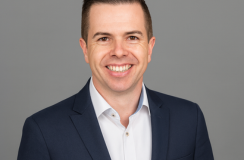


%20-%20thumbnail.png)

.png)




%20-%20thumbnail.png)


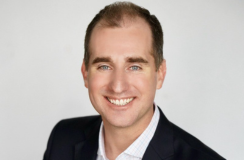






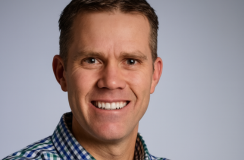





%20-%20thumbnail.png)




